Strategic Analysis Report: Unilever's Business Strategy and Planning
VerifiedAdded on 2023/06/07
|15
|4601
|189
Report
AI Summary
This report provides a comprehensive analysis of Unilever's business strategy. It begins with an introduction to business strategies and the importance of effective planning for market competitiveness. The report applies frameworks like PESTLE and SWOT to analyze the macro environment and internal factors affecting Unilever. It then delves into the internal environment using McKinsey's 7S model and Value Chain analysis to assess strengths and weaknesses. Porter's Five Forces model is applied to evaluate competitive forces, followed by a discussion of strategic planning using Ansoff's Growth Vector Matrix. The report also includes an application of the VRIO model and concludes with a strategic management plan. The analysis highlights key aspects of Unilever's operations, challenges, and strategic approaches in the consumer goods market, providing insights into its competitive position and future strategies.
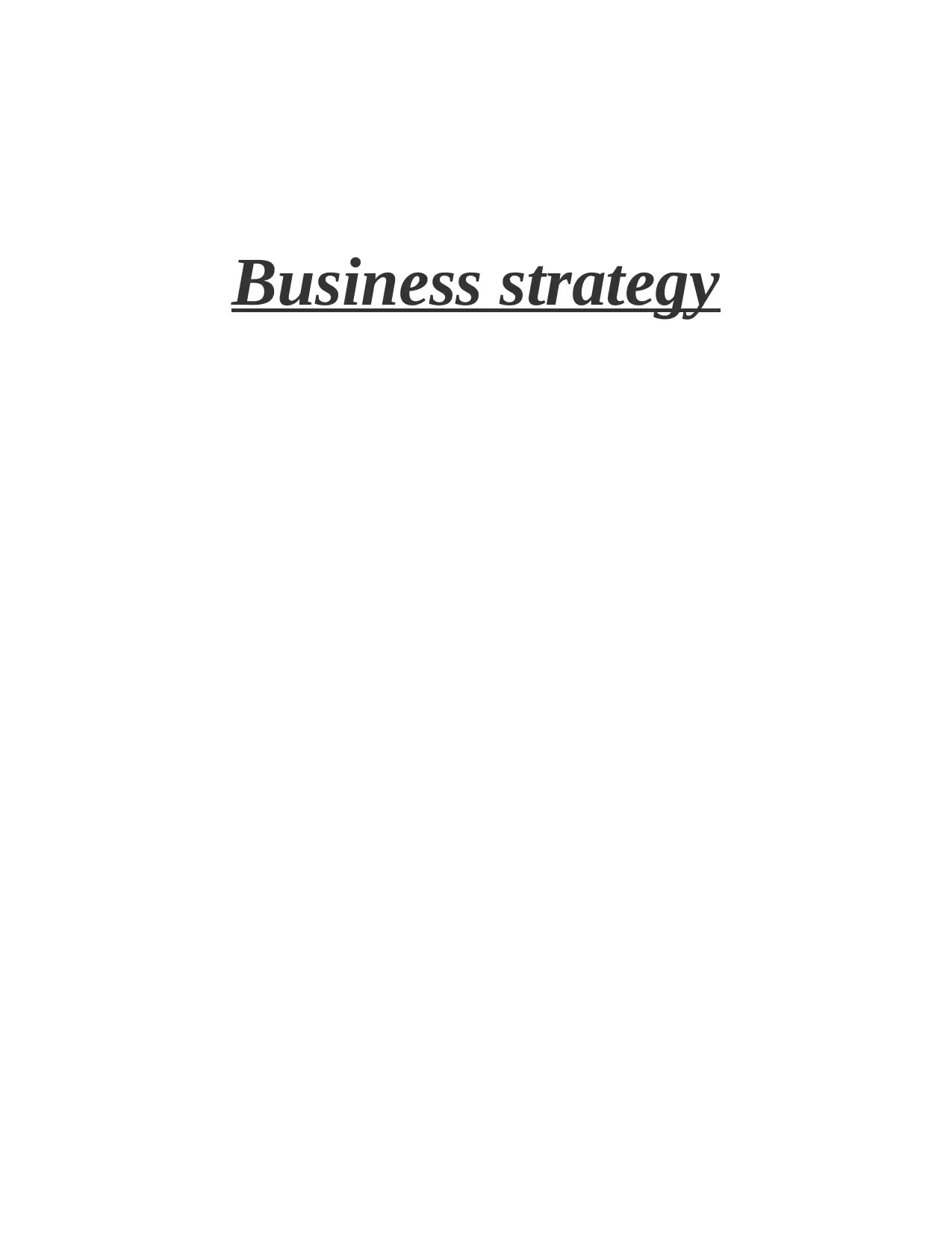
Business strategy
Paraphrase This Document
Need a fresh take? Get an instant paraphrase of this document with our AI Paraphraser
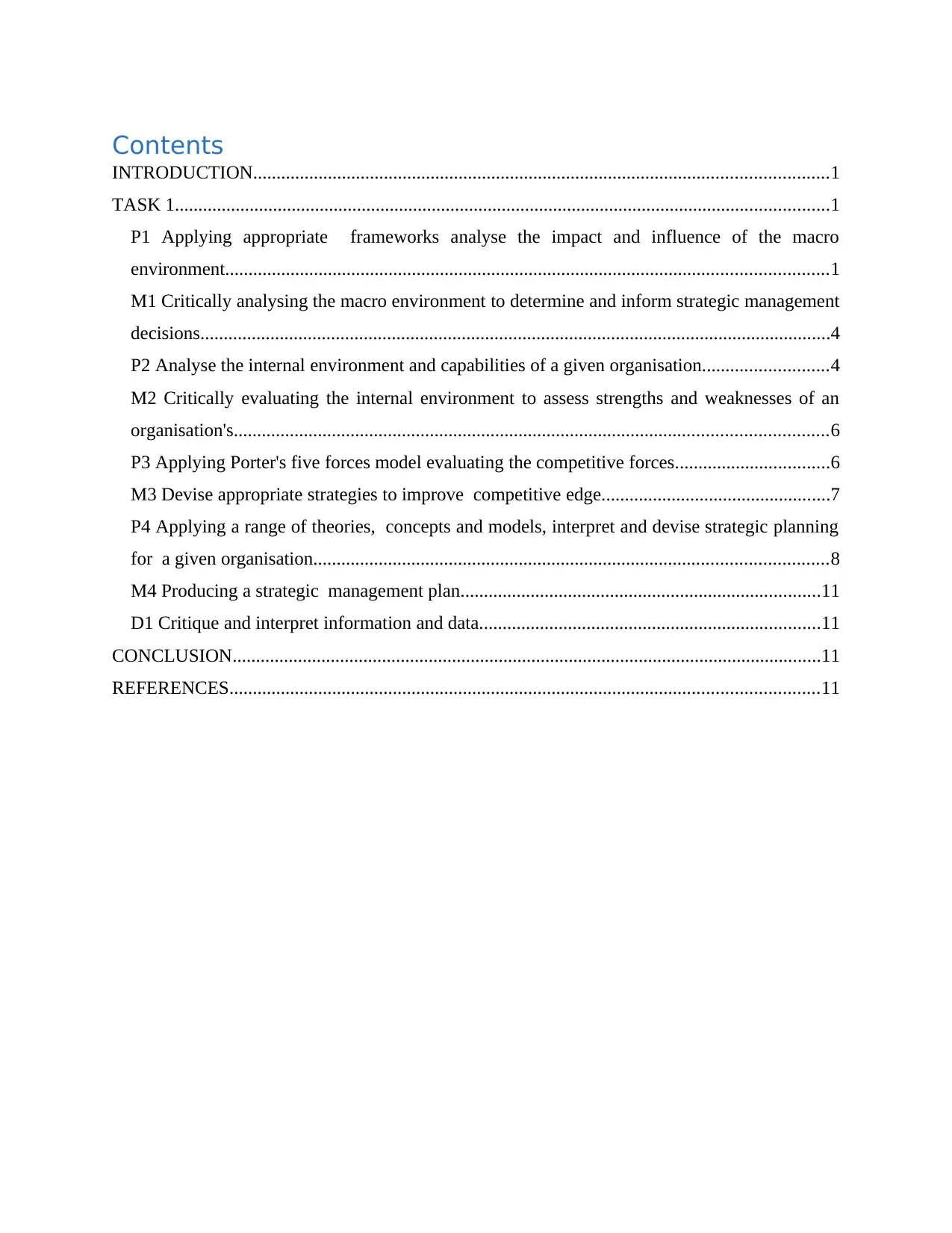
Contents
INTRODUCTION...........................................................................................................................1
TASK 1............................................................................................................................................1
P1 Applying appropriate frameworks analyse the impact and influence of the macro
environment.................................................................................................................................1
M1 Critically analysing the macro environment to determine and inform strategic management
decisions.......................................................................................................................................4
P2 Analyse the internal environment and capabilities of a given organisation...........................4
M2 Critically evaluating the internal environment to assess strengths and weaknesses of an
organisation's...............................................................................................................................6
P3 Applying Porter's five forces model evaluating the competitive forces.................................6
M3 Devise appropriate strategies to improve competitive edge.................................................7
P4 Applying a range of theories, concepts and models, interpret and devise strategic planning
for a given organisation..............................................................................................................8
M4 Producing a strategic management plan.............................................................................11
D1 Critique and interpret information and data.........................................................................11
CONCLUSION..............................................................................................................................11
REFERENCES..............................................................................................................................11
INTRODUCTION...........................................................................................................................1
TASK 1............................................................................................................................................1
P1 Applying appropriate frameworks analyse the impact and influence of the macro
environment.................................................................................................................................1
M1 Critically analysing the macro environment to determine and inform strategic management
decisions.......................................................................................................................................4
P2 Analyse the internal environment and capabilities of a given organisation...........................4
M2 Critically evaluating the internal environment to assess strengths and weaknesses of an
organisation's...............................................................................................................................6
P3 Applying Porter's five forces model evaluating the competitive forces.................................6
M3 Devise appropriate strategies to improve competitive edge.................................................7
P4 Applying a range of theories, concepts and models, interpret and devise strategic planning
for a given organisation..............................................................................................................8
M4 Producing a strategic management plan.............................................................................11
D1 Critique and interpret information and data.........................................................................11
CONCLUSION..............................................................................................................................11
REFERENCES..............................................................................................................................11
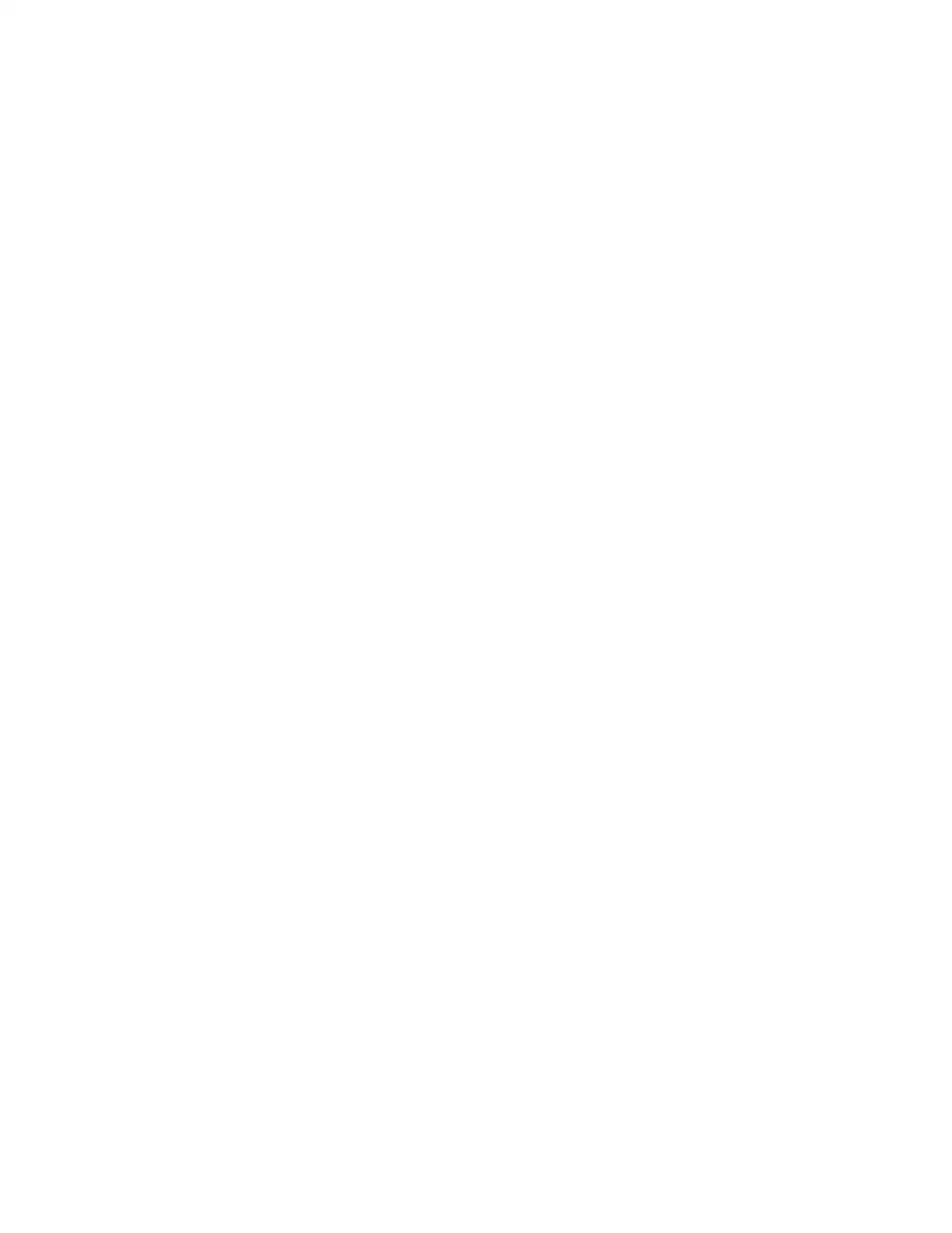
⊘ This is a preview!⊘
Do you want full access?
Subscribe today to unlock all pages.

Trusted by 1+ million students worldwide
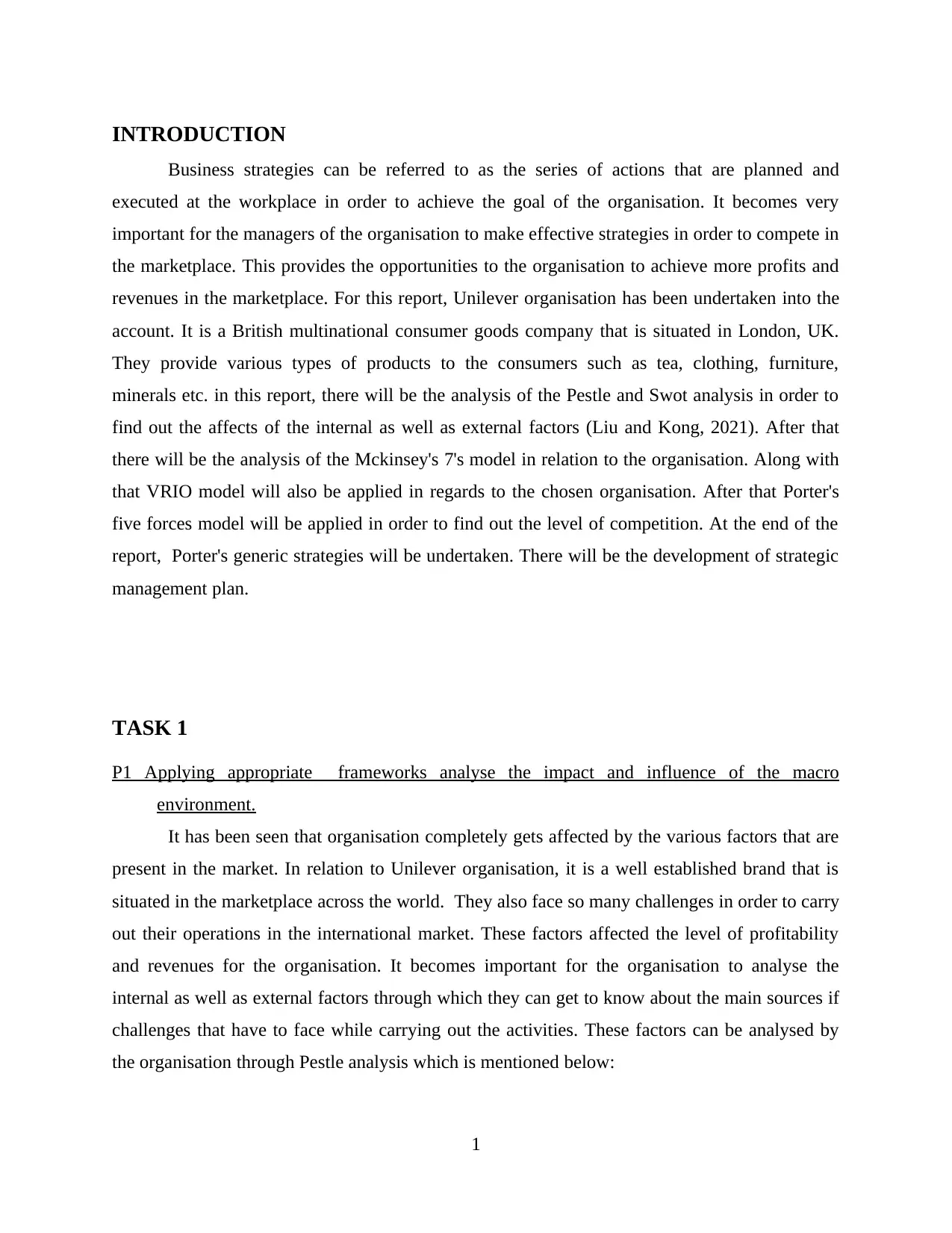
INTRODUCTION
Business strategies can be referred to as the series of actions that are planned and
executed at the workplace in order to achieve the goal of the organisation. It becomes very
important for the managers of the organisation to make effective strategies in order to compete in
the marketplace. This provides the opportunities to the organisation to achieve more profits and
revenues in the marketplace. For this report, Unilever organisation has been undertaken into the
account. It is a British multinational consumer goods company that is situated in London, UK.
They provide various types of products to the consumers such as tea, clothing, furniture,
minerals etc. in this report, there will be the analysis of the Pestle and Swot analysis in order to
find out the affects of the internal as well as external factors (Liu and Kong, 2021). After that
there will be the analysis of the Mckinsey's 7's model in relation to the organisation. Along with
that VRIO model will also be applied in regards to the chosen organisation. After that Porter's
five forces model will be applied in order to find out the level of competition. At the end of the
report, Porter's generic strategies will be undertaken. There will be the development of strategic
management plan.
TASK 1
P1 Applying appropriate frameworks analyse the impact and influence of the macro
environment.
It has been seen that organisation completely gets affected by the various factors that are
present in the market. In relation to Unilever organisation, it is a well established brand that is
situated in the marketplace across the world. They also face so many challenges in order to carry
out their operations in the international market. These factors affected the level of profitability
and revenues for the organisation. It becomes important for the organisation to analyse the
internal as well as external factors through which they can get to know about the main sources if
challenges that have to face while carrying out the activities. These factors can be analysed by
the organisation through Pestle analysis which is mentioned below:
1
Business strategies can be referred to as the series of actions that are planned and
executed at the workplace in order to achieve the goal of the organisation. It becomes very
important for the managers of the organisation to make effective strategies in order to compete in
the marketplace. This provides the opportunities to the organisation to achieve more profits and
revenues in the marketplace. For this report, Unilever organisation has been undertaken into the
account. It is a British multinational consumer goods company that is situated in London, UK.
They provide various types of products to the consumers such as tea, clothing, furniture,
minerals etc. in this report, there will be the analysis of the Pestle and Swot analysis in order to
find out the affects of the internal as well as external factors (Liu and Kong, 2021). After that
there will be the analysis of the Mckinsey's 7's model in relation to the organisation. Along with
that VRIO model will also be applied in regards to the chosen organisation. After that Porter's
five forces model will be applied in order to find out the level of competition. At the end of the
report, Porter's generic strategies will be undertaken. There will be the development of strategic
management plan.
TASK 1
P1 Applying appropriate frameworks analyse the impact and influence of the macro
environment.
It has been seen that organisation completely gets affected by the various factors that are
present in the market. In relation to Unilever organisation, it is a well established brand that is
situated in the marketplace across the world. They also face so many challenges in order to carry
out their operations in the international market. These factors affected the level of profitability
and revenues for the organisation. It becomes important for the organisation to analyse the
internal as well as external factors through which they can get to know about the main sources if
challenges that have to face while carrying out the activities. These factors can be analysed by
the organisation through Pestle analysis which is mentioned below:
1
Paraphrase This Document
Need a fresh take? Get an instant paraphrase of this document with our AI Paraphraser
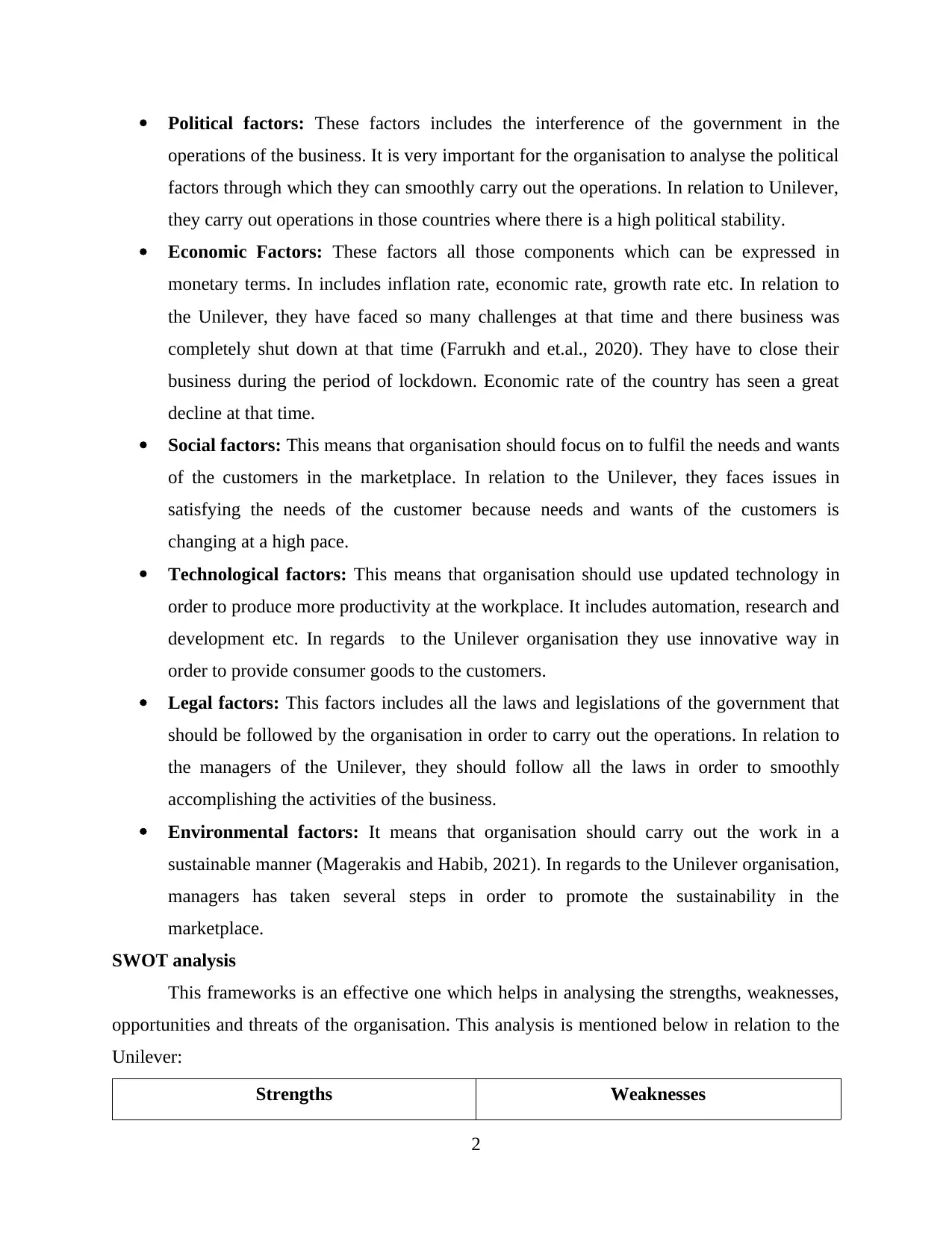
Political factors: These factors includes the interference of the government in the
operations of the business. It is very important for the organisation to analyse the political
factors through which they can smoothly carry out the operations. In relation to Unilever,
they carry out operations in those countries where there is a high political stability.
Economic Factors: These factors all those components which can be expressed in
monetary terms. In includes inflation rate, economic rate, growth rate etc. In relation to
the Unilever, they have faced so many challenges at that time and there business was
completely shut down at that time (Farrukh and et.al., 2020). They have to close their
business during the period of lockdown. Economic rate of the country has seen a great
decline at that time.
Social factors: This means that organisation should focus on to fulfil the needs and wants
of the customers in the marketplace. In relation to the Unilever, they faces issues in
satisfying the needs of the customer because needs and wants of the customers is
changing at a high pace.
Technological factors: This means that organisation should use updated technology in
order to produce more productivity at the workplace. It includes automation, research and
development etc. In regards to the Unilever organisation they use innovative way in
order to provide consumer goods to the customers.
Legal factors: This factors includes all the laws and legislations of the government that
should be followed by the organisation in order to carry out the operations. In relation to
the managers of the Unilever, they should follow all the laws in order to smoothly
accomplishing the activities of the business.
Environmental factors: It means that organisation should carry out the work in a
sustainable manner (Magerakis and Habib, 2021). In regards to the Unilever organisation,
managers has taken several steps in order to promote the sustainability in the
marketplace.
SWOT analysis
This frameworks is an effective one which helps in analysing the strengths, weaknesses,
opportunities and threats of the organisation. This analysis is mentioned below in relation to the
Unilever:
Strengths Weaknesses
2
operations of the business. It is very important for the organisation to analyse the political
factors through which they can smoothly carry out the operations. In relation to Unilever,
they carry out operations in those countries where there is a high political stability.
Economic Factors: These factors all those components which can be expressed in
monetary terms. In includes inflation rate, economic rate, growth rate etc. In relation to
the Unilever, they have faced so many challenges at that time and there business was
completely shut down at that time (Farrukh and et.al., 2020). They have to close their
business during the period of lockdown. Economic rate of the country has seen a great
decline at that time.
Social factors: This means that organisation should focus on to fulfil the needs and wants
of the customers in the marketplace. In relation to the Unilever, they faces issues in
satisfying the needs of the customer because needs and wants of the customers is
changing at a high pace.
Technological factors: This means that organisation should use updated technology in
order to produce more productivity at the workplace. It includes automation, research and
development etc. In regards to the Unilever organisation they use innovative way in
order to provide consumer goods to the customers.
Legal factors: This factors includes all the laws and legislations of the government that
should be followed by the organisation in order to carry out the operations. In relation to
the managers of the Unilever, they should follow all the laws in order to smoothly
accomplishing the activities of the business.
Environmental factors: It means that organisation should carry out the work in a
sustainable manner (Magerakis and Habib, 2021). In regards to the Unilever organisation,
managers has taken several steps in order to promote the sustainability in the
marketplace.
SWOT analysis
This frameworks is an effective one which helps in analysing the strengths, weaknesses,
opportunities and threats of the organisation. This analysis is mentioned below in relation to the
Unilever:
Strengths Weaknesses
2
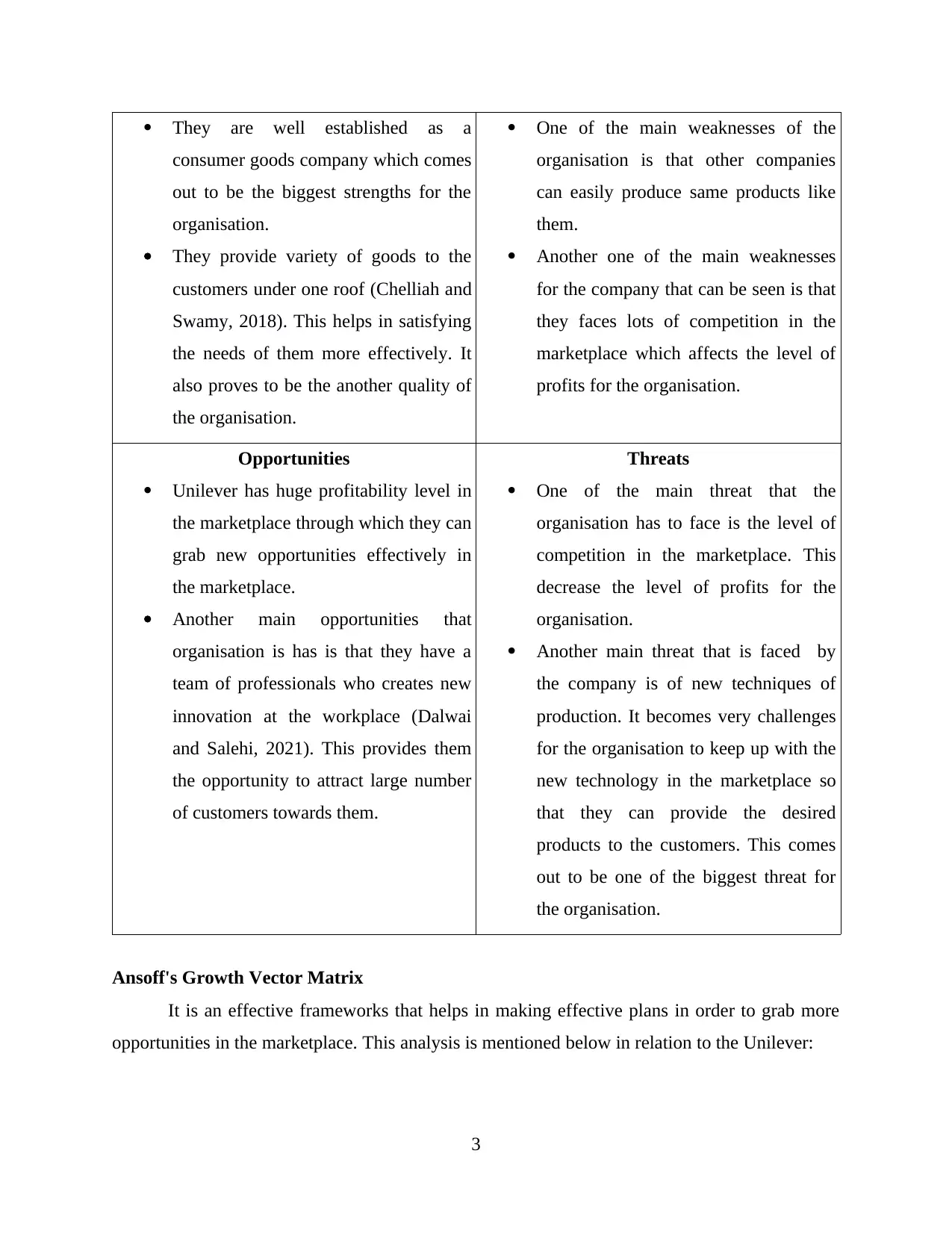
They are well established as a
consumer goods company which comes
out to be the biggest strengths for the
organisation.
They provide variety of goods to the
customers under one roof (Chelliah and
Swamy, 2018). This helps in satisfying
the needs of them more effectively. It
also proves to be the another quality of
the organisation.
One of the main weaknesses of the
organisation is that other companies
can easily produce same products like
them.
Another one of the main weaknesses
for the company that can be seen is that
they faces lots of competition in the
marketplace which affects the level of
profits for the organisation.
Opportunities
Unilever has huge profitability level in
the marketplace through which they can
grab new opportunities effectively in
the marketplace.
Another main opportunities that
organisation is has is that they have a
team of professionals who creates new
innovation at the workplace (Dalwai
and Salehi, 2021). This provides them
the opportunity to attract large number
of customers towards them.
Threats
One of the main threat that the
organisation has to face is the level of
competition in the marketplace. This
decrease the level of profits for the
organisation.
Another main threat that is faced by
the company is of new techniques of
production. It becomes very challenges
for the organisation to keep up with the
new technology in the marketplace so
that they can provide the desired
products to the customers. This comes
out to be one of the biggest threat for
the organisation.
Ansoff's Growth Vector Matrix
It is an effective frameworks that helps in making effective plans in order to grab more
opportunities in the marketplace. This analysis is mentioned below in relation to the Unilever:
3
consumer goods company which comes
out to be the biggest strengths for the
organisation.
They provide variety of goods to the
customers under one roof (Chelliah and
Swamy, 2018). This helps in satisfying
the needs of them more effectively. It
also proves to be the another quality of
the organisation.
One of the main weaknesses of the
organisation is that other companies
can easily produce same products like
them.
Another one of the main weaknesses
for the company that can be seen is that
they faces lots of competition in the
marketplace which affects the level of
profits for the organisation.
Opportunities
Unilever has huge profitability level in
the marketplace through which they can
grab new opportunities effectively in
the marketplace.
Another main opportunities that
organisation is has is that they have a
team of professionals who creates new
innovation at the workplace (Dalwai
and Salehi, 2021). This provides them
the opportunity to attract large number
of customers towards them.
Threats
One of the main threat that the
organisation has to face is the level of
competition in the marketplace. This
decrease the level of profits for the
organisation.
Another main threat that is faced by
the company is of new techniques of
production. It becomes very challenges
for the organisation to keep up with the
new technology in the marketplace so
that they can provide the desired
products to the customers. This comes
out to be one of the biggest threat for
the organisation.
Ansoff's Growth Vector Matrix
It is an effective frameworks that helps in making effective plans in order to grab more
opportunities in the marketplace. This analysis is mentioned below in relation to the Unilever:
3
⊘ This is a preview!⊘
Do you want full access?
Subscribe today to unlock all pages.

Trusted by 1+ million students worldwide
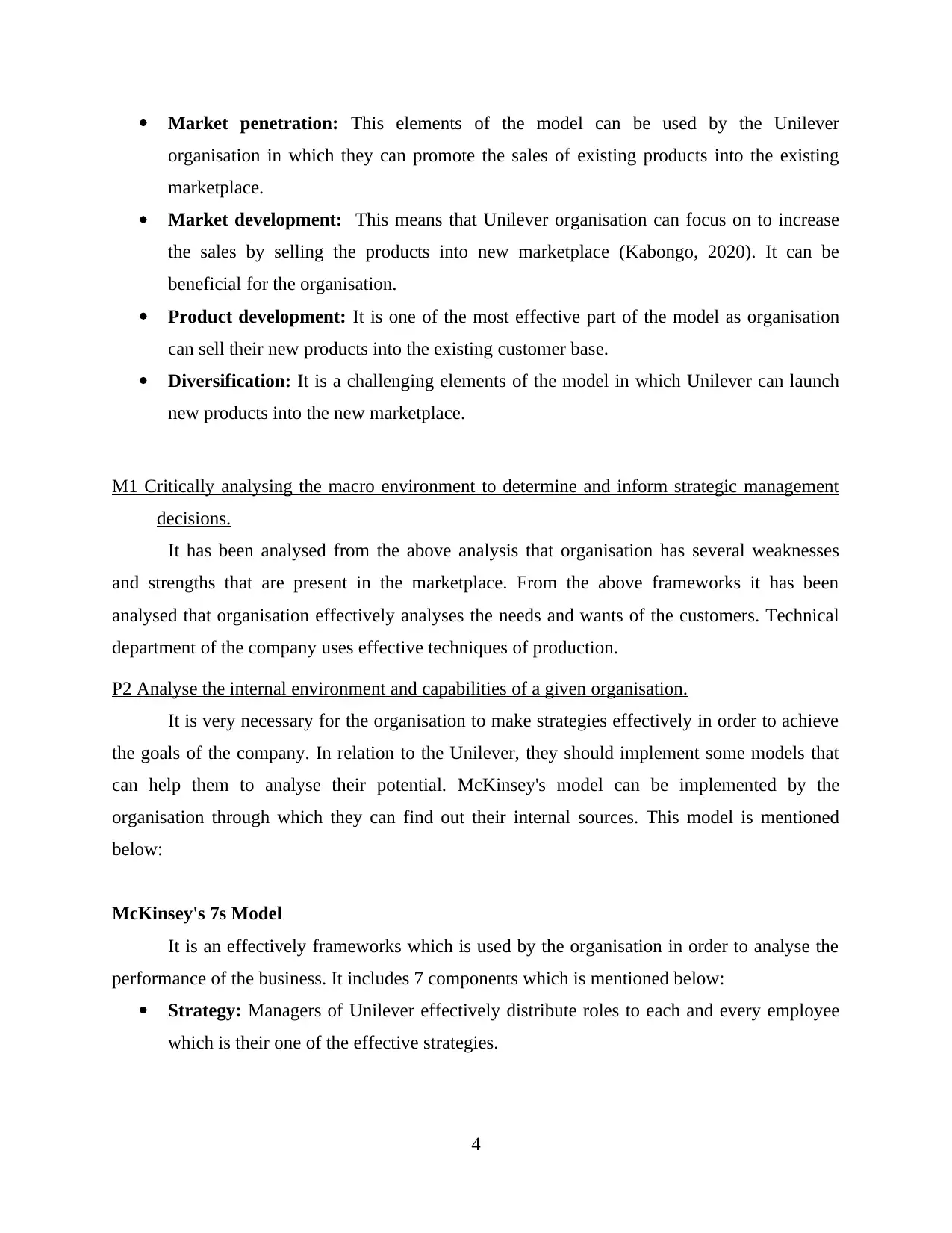
Market penetration: This elements of the model can be used by the Unilever
organisation in which they can promote the sales of existing products into the existing
marketplace.
Market development: This means that Unilever organisation can focus on to increase
the sales by selling the products into new marketplace (Kabongo, 2020). It can be
beneficial for the organisation.
Product development: It is one of the most effective part of the model as organisation
can sell their new products into the existing customer base.
Diversification: It is a challenging elements of the model in which Unilever can launch
new products into the new marketplace.
M1 Critically analysing the macro environment to determine and inform strategic management
decisions.
It has been analysed from the above analysis that organisation has several weaknesses
and strengths that are present in the marketplace. From the above frameworks it has been
analysed that organisation effectively analyses the needs and wants of the customers. Technical
department of the company uses effective techniques of production.
P2 Analyse the internal environment and capabilities of a given organisation.
It is very necessary for the organisation to make strategies effectively in order to achieve
the goals of the company. In relation to the Unilever, they should implement some models that
can help them to analyse their potential. McKinsey's model can be implemented by the
organisation through which they can find out their internal sources. This model is mentioned
below:
McKinsey's 7s Model
It is an effectively frameworks which is used by the organisation in order to analyse the
performance of the business. It includes 7 components which is mentioned below:
Strategy: Managers of Unilever effectively distribute roles to each and every employee
which is their one of the effective strategies.
4
organisation in which they can promote the sales of existing products into the existing
marketplace.
Market development: This means that Unilever organisation can focus on to increase
the sales by selling the products into new marketplace (Kabongo, 2020). It can be
beneficial for the organisation.
Product development: It is one of the most effective part of the model as organisation
can sell their new products into the existing customer base.
Diversification: It is a challenging elements of the model in which Unilever can launch
new products into the new marketplace.
M1 Critically analysing the macro environment to determine and inform strategic management
decisions.
It has been analysed from the above analysis that organisation has several weaknesses
and strengths that are present in the marketplace. From the above frameworks it has been
analysed that organisation effectively analyses the needs and wants of the customers. Technical
department of the company uses effective techniques of production.
P2 Analyse the internal environment and capabilities of a given organisation.
It is very necessary for the organisation to make strategies effectively in order to achieve
the goals of the company. In relation to the Unilever, they should implement some models that
can help them to analyse their potential. McKinsey's model can be implemented by the
organisation through which they can find out their internal sources. This model is mentioned
below:
McKinsey's 7s Model
It is an effectively frameworks which is used by the organisation in order to analyse the
performance of the business. It includes 7 components which is mentioned below:
Strategy: Managers of Unilever effectively distribute roles to each and every employee
which is their one of the effective strategies.
4
Paraphrase This Document
Need a fresh take? Get an instant paraphrase of this document with our AI Paraphraser
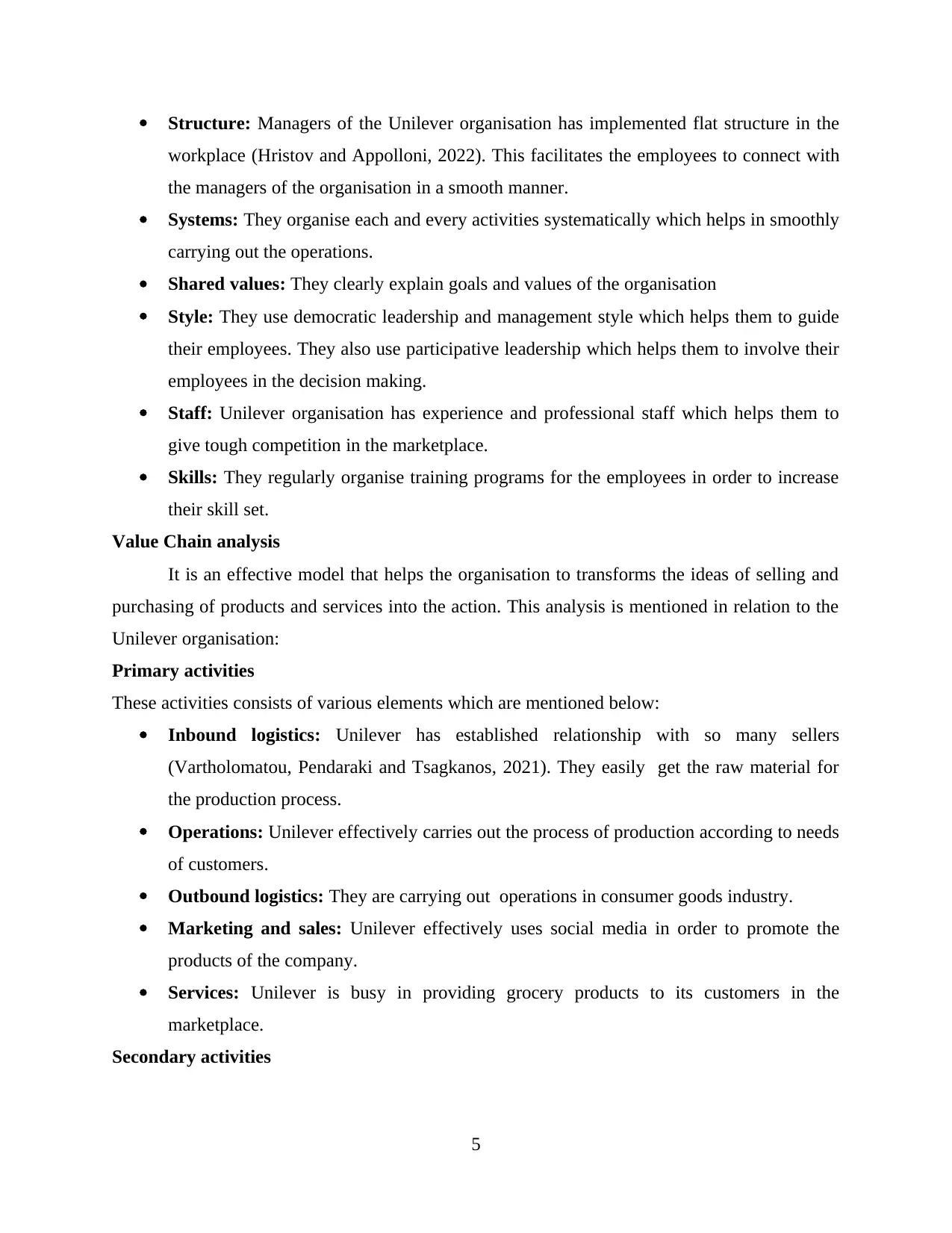
Structure: Managers of the Unilever organisation has implemented flat structure in the
workplace (Hristov and Appolloni, 2022). This facilitates the employees to connect with
the managers of the organisation in a smooth manner.
Systems: They organise each and every activities systematically which helps in smoothly
carrying out the operations.
Shared values: They clearly explain goals and values of the organisation
Style: They use democratic leadership and management style which helps them to guide
their employees. They also use participative leadership which helps them to involve their
employees in the decision making.
Staff: Unilever organisation has experience and professional staff which helps them to
give tough competition in the marketplace.
Skills: They regularly organise training programs for the employees in order to increase
their skill set.
Value Chain analysis
It is an effective model that helps the organisation to transforms the ideas of selling and
purchasing of products and services into the action. This analysis is mentioned in relation to the
Unilever organisation:
Primary activities
These activities consists of various elements which are mentioned below:
Inbound logistics: Unilever has established relationship with so many sellers
(Vartholomatou, Pendaraki and Tsagkanos, 2021). They easily get the raw material for
the production process.
Operations: Unilever effectively carries out the process of production according to needs
of customers.
Outbound logistics: They are carrying out operations in consumer goods industry.
Marketing and sales: Unilever effectively uses social media in order to promote the
products of the company.
Services: Unilever is busy in providing grocery products to its customers in the
marketplace.
Secondary activities
5
workplace (Hristov and Appolloni, 2022). This facilitates the employees to connect with
the managers of the organisation in a smooth manner.
Systems: They organise each and every activities systematically which helps in smoothly
carrying out the operations.
Shared values: They clearly explain goals and values of the organisation
Style: They use democratic leadership and management style which helps them to guide
their employees. They also use participative leadership which helps them to involve their
employees in the decision making.
Staff: Unilever organisation has experience and professional staff which helps them to
give tough competition in the marketplace.
Skills: They regularly organise training programs for the employees in order to increase
their skill set.
Value Chain analysis
It is an effective model that helps the organisation to transforms the ideas of selling and
purchasing of products and services into the action. This analysis is mentioned in relation to the
Unilever organisation:
Primary activities
These activities consists of various elements which are mentioned below:
Inbound logistics: Unilever has established relationship with so many sellers
(Vartholomatou, Pendaraki and Tsagkanos, 2021). They easily get the raw material for
the production process.
Operations: Unilever effectively carries out the process of production according to needs
of customers.
Outbound logistics: They are carrying out operations in consumer goods industry.
Marketing and sales: Unilever effectively uses social media in order to promote the
products of the company.
Services: Unilever is busy in providing grocery products to its customers in the
marketplace.
Secondary activities
5
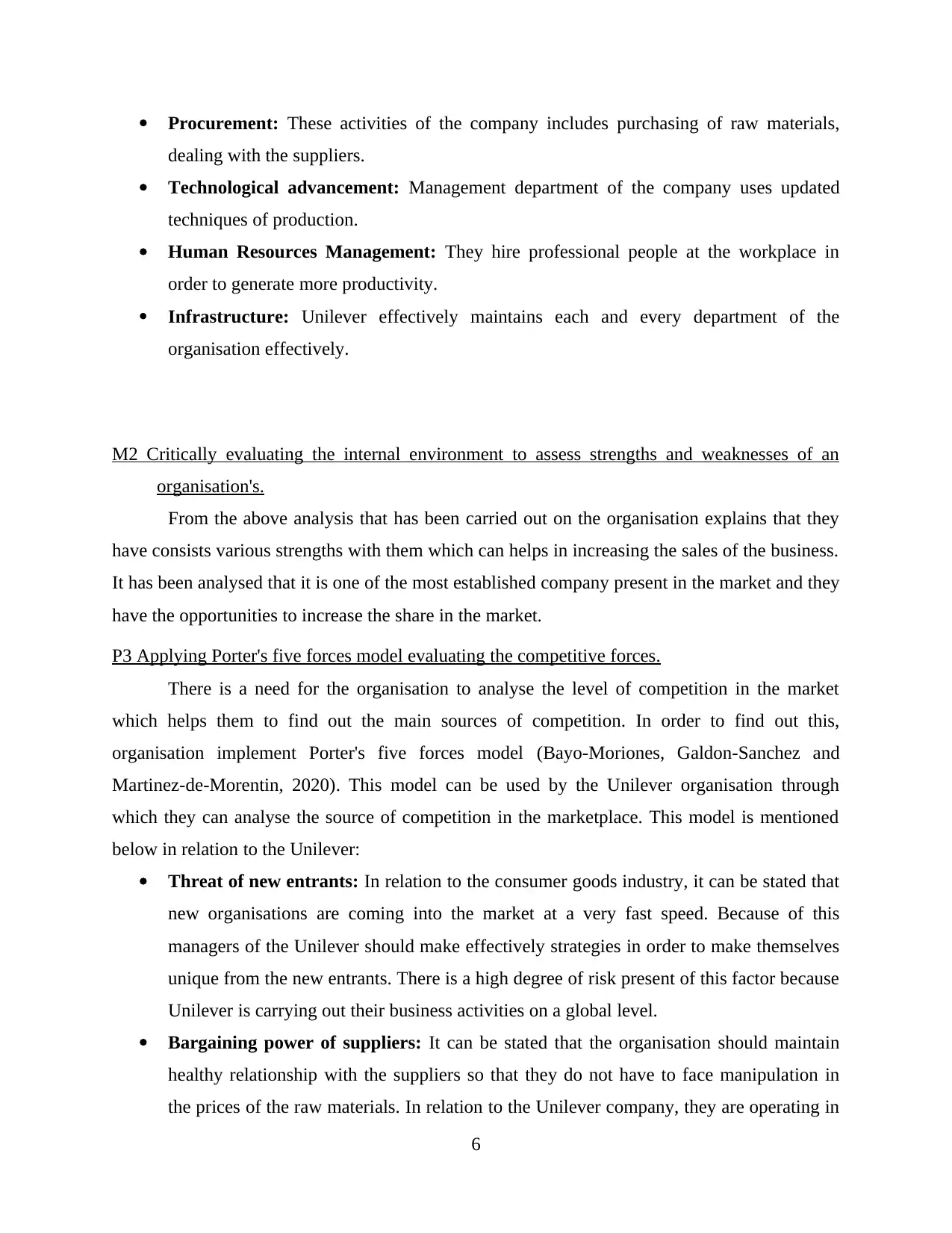
Procurement: These activities of the company includes purchasing of raw materials,
dealing with the suppliers.
Technological advancement: Management department of the company uses updated
techniques of production.
Human Resources Management: They hire professional people at the workplace in
order to generate more productivity.
Infrastructure: Unilever effectively maintains each and every department of the
organisation effectively.
M2 Critically evaluating the internal environment to assess strengths and weaknesses of an
organisation's.
From the above analysis that has been carried out on the organisation explains that they
have consists various strengths with them which can helps in increasing the sales of the business.
It has been analysed that it is one of the most established company present in the market and they
have the opportunities to increase the share in the market.
P3 Applying Porter's five forces model evaluating the competitive forces.
There is a need for the organisation to analyse the level of competition in the market
which helps them to find out the main sources of competition. In order to find out this,
organisation implement Porter's five forces model (Bayo-Moriones, Galdon-Sanchez and
Martinez-de-Morentin, 2020). This model can be used by the Unilever organisation through
which they can analyse the source of competition in the marketplace. This model is mentioned
below in relation to the Unilever:
Threat of new entrants: In relation to the consumer goods industry, it can be stated that
new organisations are coming into the market at a very fast speed. Because of this
managers of the Unilever should make effectively strategies in order to make themselves
unique from the new entrants. There is a high degree of risk present of this factor because
Unilever is carrying out their business activities on a global level.
Bargaining power of suppliers: It can be stated that the organisation should maintain
healthy relationship with the suppliers so that they do not have to face manipulation in
the prices of the raw materials. In relation to the Unilever company, they are operating in
6
dealing with the suppliers.
Technological advancement: Management department of the company uses updated
techniques of production.
Human Resources Management: They hire professional people at the workplace in
order to generate more productivity.
Infrastructure: Unilever effectively maintains each and every department of the
organisation effectively.
M2 Critically evaluating the internal environment to assess strengths and weaknesses of an
organisation's.
From the above analysis that has been carried out on the organisation explains that they
have consists various strengths with them which can helps in increasing the sales of the business.
It has been analysed that it is one of the most established company present in the market and they
have the opportunities to increase the share in the market.
P3 Applying Porter's five forces model evaluating the competitive forces.
There is a need for the organisation to analyse the level of competition in the market
which helps them to find out the main sources of competition. In order to find out this,
organisation implement Porter's five forces model (Bayo-Moriones, Galdon-Sanchez and
Martinez-de-Morentin, 2020). This model can be used by the Unilever organisation through
which they can analyse the source of competition in the marketplace. This model is mentioned
below in relation to the Unilever:
Threat of new entrants: In relation to the consumer goods industry, it can be stated that
new organisations are coming into the market at a very fast speed. Because of this
managers of the Unilever should make effectively strategies in order to make themselves
unique from the new entrants. There is a high degree of risk present of this factor because
Unilever is carrying out their business activities on a global level.
Bargaining power of suppliers: It can be stated that the organisation should maintain
healthy relationship with the suppliers so that they do not have to face manipulation in
the prices of the raw materials. In relation to the Unilever company, they are operating in
6
⊘ This is a preview!⊘
Do you want full access?
Subscribe today to unlock all pages.

Trusted by 1+ million students worldwide
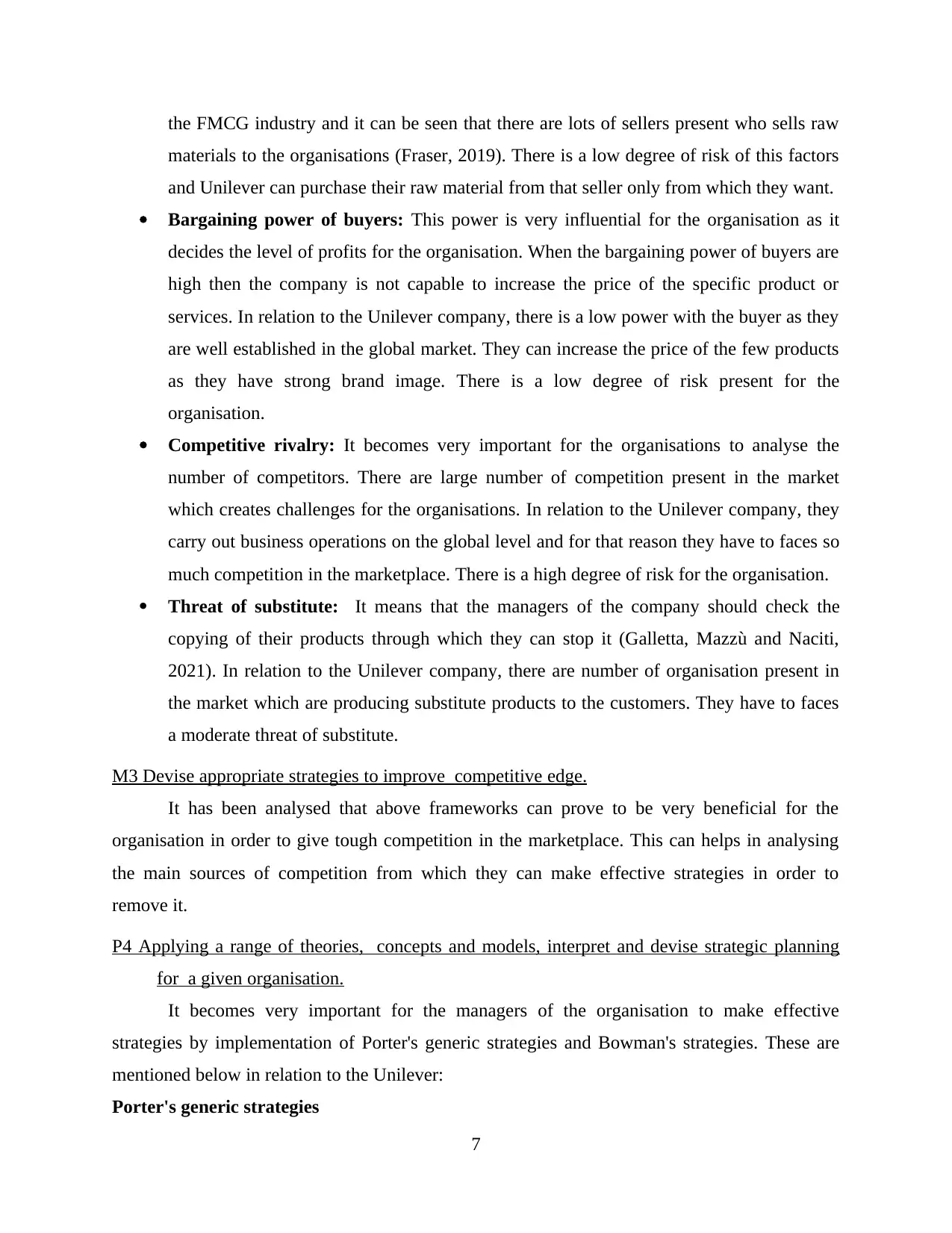
the FMCG industry and it can be seen that there are lots of sellers present who sells raw
materials to the organisations (Fraser, 2019). There is a low degree of risk of this factors
and Unilever can purchase their raw material from that seller only from which they want.
Bargaining power of buyers: This power is very influential for the organisation as it
decides the level of profits for the organisation. When the bargaining power of buyers are
high then the company is not capable to increase the price of the specific product or
services. In relation to the Unilever company, there is a low power with the buyer as they
are well established in the global market. They can increase the price of the few products
as they have strong brand image. There is a low degree of risk present for the
organisation.
Competitive rivalry: It becomes very important for the organisations to analyse the
number of competitors. There are large number of competition present in the market
which creates challenges for the organisations. In relation to the Unilever company, they
carry out business operations on the global level and for that reason they have to faces so
much competition in the marketplace. There is a high degree of risk for the organisation.
Threat of substitute: It means that the managers of the company should check the
copying of their products through which they can stop it (Galletta, Mazzù and Naciti,
2021). In relation to the Unilever company, there are number of organisation present in
the market which are producing substitute products to the customers. They have to faces
a moderate threat of substitute.
M3 Devise appropriate strategies to improve competitive edge.
It has been analysed that above frameworks can prove to be very beneficial for the
organisation in order to give tough competition in the marketplace. This can helps in analysing
the main sources of competition from which they can make effective strategies in order to
remove it.
P4 Applying a range of theories, concepts and models, interpret and devise strategic planning
for a given organisation.
It becomes very important for the managers of the organisation to make effective
strategies by implementation of Porter's generic strategies and Bowman's strategies. These are
mentioned below in relation to the Unilever:
Porter's generic strategies
7
materials to the organisations (Fraser, 2019). There is a low degree of risk of this factors
and Unilever can purchase their raw material from that seller only from which they want.
Bargaining power of buyers: This power is very influential for the organisation as it
decides the level of profits for the organisation. When the bargaining power of buyers are
high then the company is not capable to increase the price of the specific product or
services. In relation to the Unilever company, there is a low power with the buyer as they
are well established in the global market. They can increase the price of the few products
as they have strong brand image. There is a low degree of risk present for the
organisation.
Competitive rivalry: It becomes very important for the organisations to analyse the
number of competitors. There are large number of competition present in the market
which creates challenges for the organisations. In relation to the Unilever company, they
carry out business operations on the global level and for that reason they have to faces so
much competition in the marketplace. There is a high degree of risk for the organisation.
Threat of substitute: It means that the managers of the company should check the
copying of their products through which they can stop it (Galletta, Mazzù and Naciti,
2021). In relation to the Unilever company, there are number of organisation present in
the market which are producing substitute products to the customers. They have to faces
a moderate threat of substitute.
M3 Devise appropriate strategies to improve competitive edge.
It has been analysed that above frameworks can prove to be very beneficial for the
organisation in order to give tough competition in the marketplace. This can helps in analysing
the main sources of competition from which they can make effective strategies in order to
remove it.
P4 Applying a range of theories, concepts and models, interpret and devise strategic planning
for a given organisation.
It becomes very important for the managers of the organisation to make effective
strategies by implementation of Porter's generic strategies and Bowman's strategies. These are
mentioned below in relation to the Unilever:
Porter's generic strategies
7
Paraphrase This Document
Need a fresh take? Get an instant paraphrase of this document with our AI Paraphraser
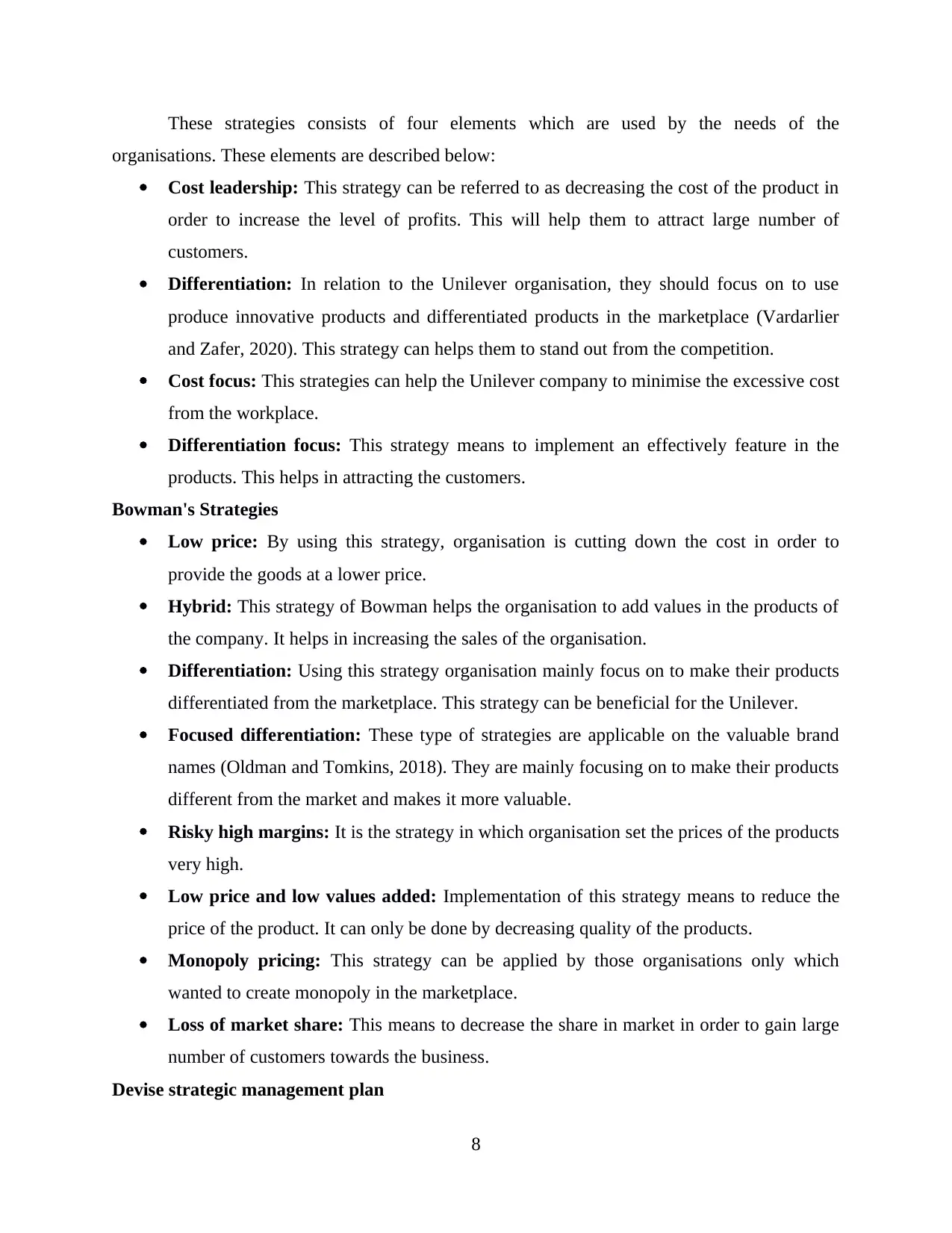
These strategies consists of four elements which are used by the needs of the
organisations. These elements are described below:
Cost leadership: This strategy can be referred to as decreasing the cost of the product in
order to increase the level of profits. This will help them to attract large number of
customers.
Differentiation: In relation to the Unilever organisation, they should focus on to use
produce innovative products and differentiated products in the marketplace (Vardarlier
and Zafer, 2020). This strategy can helps them to stand out from the competition.
Cost focus: This strategies can help the Unilever company to minimise the excessive cost
from the workplace.
Differentiation focus: This strategy means to implement an effectively feature in the
products. This helps in attracting the customers.
Bowman's Strategies
Low price: By using this strategy, organisation is cutting down the cost in order to
provide the goods at a lower price.
Hybrid: This strategy of Bowman helps the organisation to add values in the products of
the company. It helps in increasing the sales of the organisation.
Differentiation: Using this strategy organisation mainly focus on to make their products
differentiated from the marketplace. This strategy can be beneficial for the Unilever.
Focused differentiation: These type of strategies are applicable on the valuable brand
names (Oldman and Tomkins, 2018). They are mainly focusing on to make their products
different from the market and makes it more valuable.
Risky high margins: It is the strategy in which organisation set the prices of the products
very high.
Low price and low values added: Implementation of this strategy means to reduce the
price of the product. It can only be done by decreasing quality of the products.
Monopoly pricing: This strategy can be applied by those organisations only which
wanted to create monopoly in the marketplace.
Loss of market share: This means to decrease the share in market in order to gain large
number of customers towards the business.
Devise strategic management plan
8
organisations. These elements are described below:
Cost leadership: This strategy can be referred to as decreasing the cost of the product in
order to increase the level of profits. This will help them to attract large number of
customers.
Differentiation: In relation to the Unilever organisation, they should focus on to use
produce innovative products and differentiated products in the marketplace (Vardarlier
and Zafer, 2020). This strategy can helps them to stand out from the competition.
Cost focus: This strategies can help the Unilever company to minimise the excessive cost
from the workplace.
Differentiation focus: This strategy means to implement an effectively feature in the
products. This helps in attracting the customers.
Bowman's Strategies
Low price: By using this strategy, organisation is cutting down the cost in order to
provide the goods at a lower price.
Hybrid: This strategy of Bowman helps the organisation to add values in the products of
the company. It helps in increasing the sales of the organisation.
Differentiation: Using this strategy organisation mainly focus on to make their products
differentiated from the marketplace. This strategy can be beneficial for the Unilever.
Focused differentiation: These type of strategies are applicable on the valuable brand
names (Oldman and Tomkins, 2018). They are mainly focusing on to make their products
different from the market and makes it more valuable.
Risky high margins: It is the strategy in which organisation set the prices of the products
very high.
Low price and low values added: Implementation of this strategy means to reduce the
price of the product. It can only be done by decreasing quality of the products.
Monopoly pricing: This strategy can be applied by those organisations only which
wanted to create monopoly in the marketplace.
Loss of market share: This means to decrease the share in market in order to gain large
number of customers towards the business.
Devise strategic management plan
8
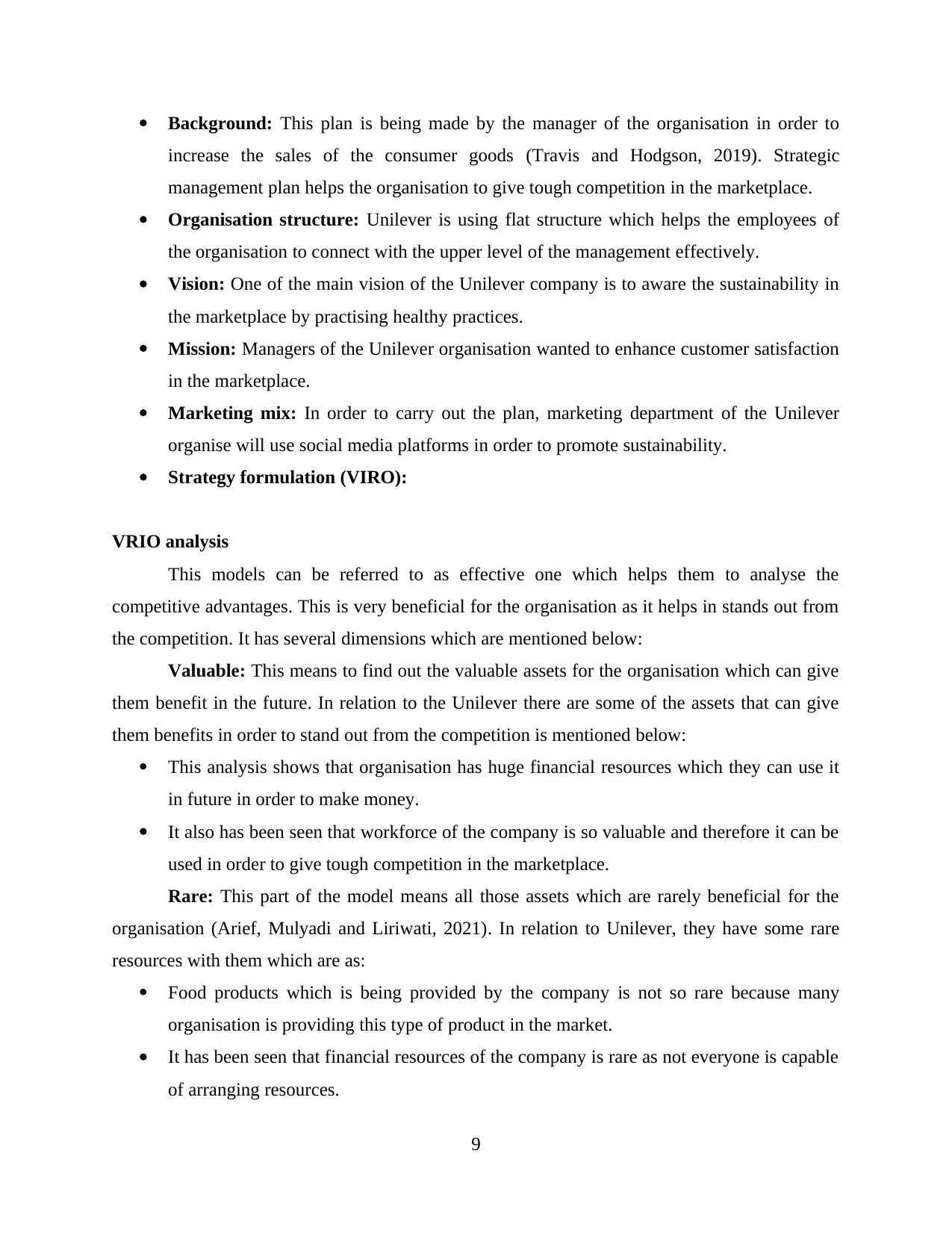
Background: This plan is being made by the manager of the organisation in order to
increase the sales of the consumer goods (Travis and Hodgson, 2019). Strategic
management plan helps the organisation to give tough competition in the marketplace.
Organisation structure: Unilever is using flat structure which helps the employees of
the organisation to connect with the upper level of the management effectively.
Vision: One of the main vision of the Unilever company is to aware the sustainability in
the marketplace by practising healthy practices.
Mission: Managers of the Unilever organisation wanted to enhance customer satisfaction
in the marketplace.
Marketing mix: In order to carry out the plan, marketing department of the Unilever
organise will use social media platforms in order to promote sustainability.
Strategy formulation (VIRO):
VRIO analysis
This models can be referred to as effective one which helps them to analyse the
competitive advantages. This is very beneficial for the organisation as it helps in stands out from
the competition. It has several dimensions which are mentioned below:
Valuable: This means to find out the valuable assets for the organisation which can give
them benefit in the future. In relation to the Unilever there are some of the assets that can give
them benefits in order to stand out from the competition is mentioned below:
This analysis shows that organisation has huge financial resources which they can use it
in future in order to make money.
It also has been seen that workforce of the company is so valuable and therefore it can be
used in order to give tough competition in the marketplace.
Rare: This part of the model means all those assets which are rarely beneficial for the
organisation (Arief, Mulyadi and Liriwati, 2021). In relation to Unilever, they have some rare
resources with them which are as:
Food products which is being provided by the company is not so rare because many
organisation is providing this type of product in the market.
It has been seen that financial resources of the company is rare as not everyone is capable
of arranging resources.
9
increase the sales of the consumer goods (Travis and Hodgson, 2019). Strategic
management plan helps the organisation to give tough competition in the marketplace.
Organisation structure: Unilever is using flat structure which helps the employees of
the organisation to connect with the upper level of the management effectively.
Vision: One of the main vision of the Unilever company is to aware the sustainability in
the marketplace by practising healthy practices.
Mission: Managers of the Unilever organisation wanted to enhance customer satisfaction
in the marketplace.
Marketing mix: In order to carry out the plan, marketing department of the Unilever
organise will use social media platforms in order to promote sustainability.
Strategy formulation (VIRO):
VRIO analysis
This models can be referred to as effective one which helps them to analyse the
competitive advantages. This is very beneficial for the organisation as it helps in stands out from
the competition. It has several dimensions which are mentioned below:
Valuable: This means to find out the valuable assets for the organisation which can give
them benefit in the future. In relation to the Unilever there are some of the assets that can give
them benefits in order to stand out from the competition is mentioned below:
This analysis shows that organisation has huge financial resources which they can use it
in future in order to make money.
It also has been seen that workforce of the company is so valuable and therefore it can be
used in order to give tough competition in the marketplace.
Rare: This part of the model means all those assets which are rarely beneficial for the
organisation (Arief, Mulyadi and Liriwati, 2021). In relation to Unilever, they have some rare
resources with them which are as:
Food products which is being provided by the company is not so rare because many
organisation is providing this type of product in the market.
It has been seen that financial resources of the company is rare as not everyone is capable
of arranging resources.
9
⊘ This is a preview!⊘
Do you want full access?
Subscribe today to unlock all pages.

Trusted by 1+ million students worldwide
1 out of 15
Related Documents
Your All-in-One AI-Powered Toolkit for Academic Success.
+13062052269
info@desklib.com
Available 24*7 on WhatsApp / Email
![[object Object]](/_next/static/media/star-bottom.7253800d.svg)
Unlock your academic potential
Copyright © 2020–2025 A2Z Services. All Rights Reserved. Developed and managed by ZUCOL.




